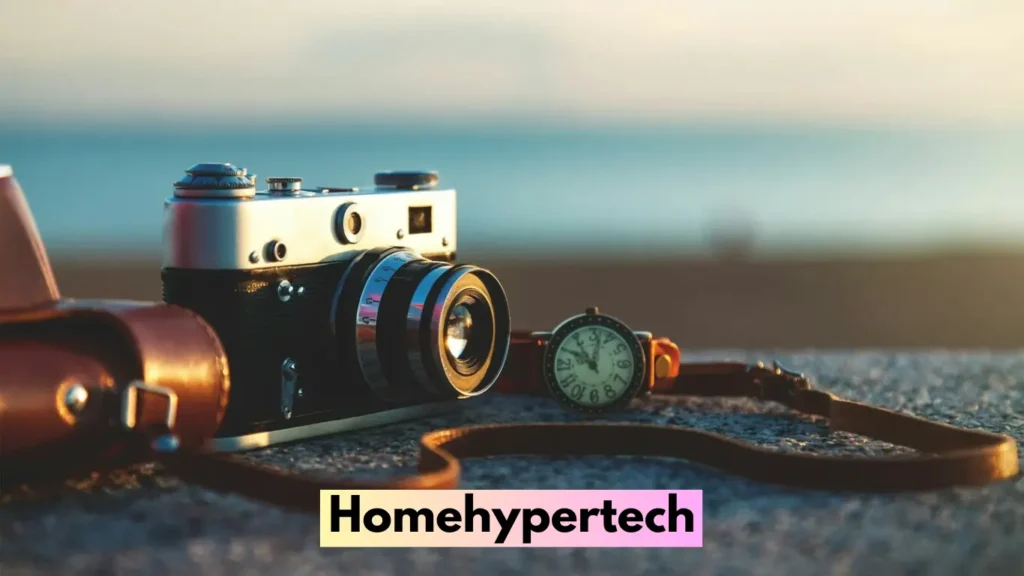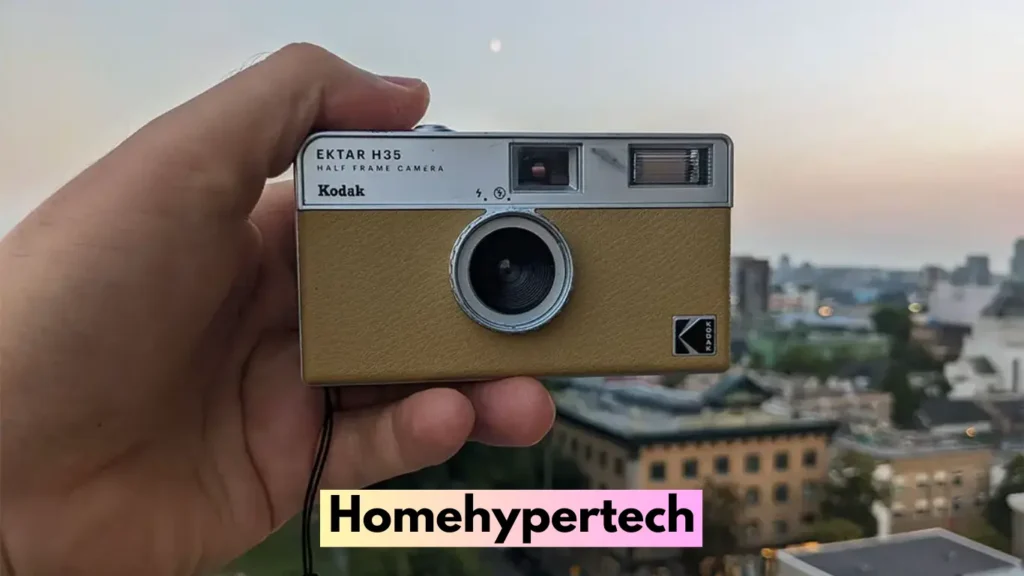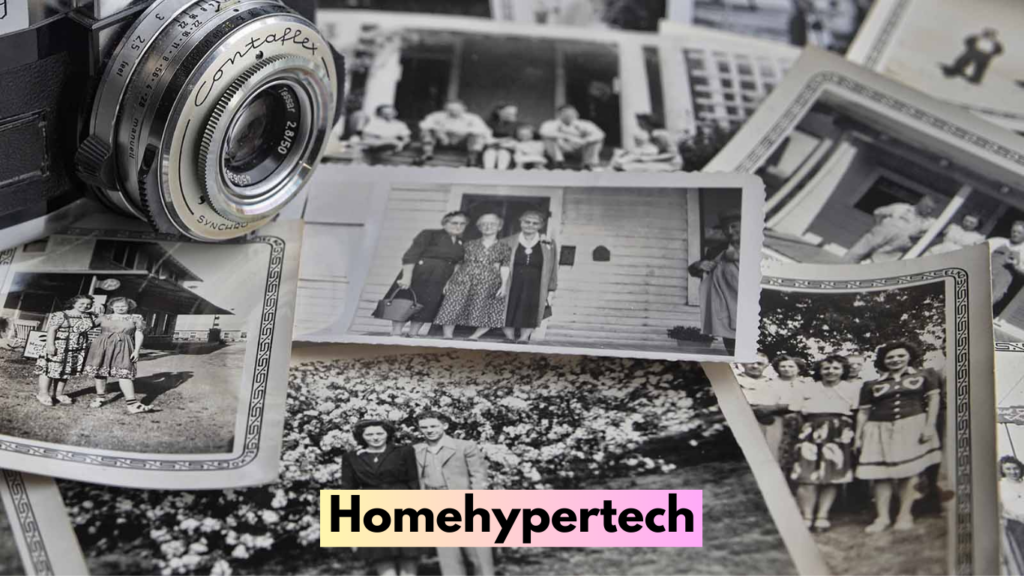6 Reasons You Should Buy a Film Camera over a disposable Camera

Disposable and film cameras are traditional cameras that use film to capture images. Disposable cameras are designed for one-time use and are usually cheaper and more convenient, while film cameras can be used repeatedly and offer higher-quality images.
It is important to discuss the topic of disposable cameras versus film cameras because it can help people decide which type of camera to use for their photography needs. The thesis statement will likely provide clear and concise information about the argument or position the essay will take on the topic.
Buy A Film Camera Over A Disposable Camera – 6 Reasons
1. Quality of Images
The quality of images captured by cameras is an essential factor influencing the choice of camera type. Comparing image quality between disposable and film cameras is crucial in this context. Film cameras produce better quality images than disposable cameras due to the higher resolution and color depth.

Here are some of the key reasons why Film cameras typically offer better image quality than disposable cameras,
- Film cameras typically use larger film sizes than disposable cameras, which allows for a higher level of detail and resolution in the resulting images. For example, film cameras may use 35mm, medium format, or large format film, while disposable cameras typically use 35mm.
- Film cameras often come with higher-quality lenses than disposable cameras, which can significantly impact the images’ sharpness, contrast, and color accuracy. While disposable cameras generally have fixed-focus lenses, film cameras often have interchangeable lenses that can be swapped out depending on the photographer’s needs.
- Film cameras offer a range of manual controls that allow photographers to adjust settings like aperture, shutter speed, and focus. This power level can be used to create more precise and intentional images with better exposure and depth of field.
- Film cameras use chemical processes to develop the film and create the final image, which can result in more subtle and nuanced tones and a greater dynamic range than the digital processing used in disposable cameras.
- Finally, film cameras often produce a more natural and pleasing image grain than disposable cameras, creating a more organic and authentic feel in the resulting images.
Overall, the combination of larger film sizes, higher-quality lenses, manual controls, chemical processing, and organic image grain all contribute to the superior image quality that film cameras offer over disposable cameras.
2. Cost (To buy a Film Camera over a disposable Camera)
When comparing the cost of disposable and film cameras, there are a few key factors to consider.
Initially, disposable cameras may seem more affordable, as they are typically cheaper to purchase upfront. However, when you factor in the cost of film processing and printing, disposable cameras can quickly become more expensive.
On the other hand, while film cameras may be more expensive to purchase initially, they can be a more cost-effective choice in the long run, as you can reuse the camera and only need to pay for film and processing.
Additionally, investing in a higher-quality film camera can save you money in the long run, as the camera will likely last longer and produce higher-quality images that may not require as much post-processing or printing.
Ultimately, the cost comparison between disposable and film cameras will depend on how frequently you use the camera and how you plan to use the images.
For more detail, go to amazon
3. Environmental Impact
Disposable and film cameras have different environmental impacts, with the former being much more harmful. Disposable cameras are designed to be used once and then disposed of, which means they are meant to be discarded after only a few uses.
On the other hand, film cameras are meant to be used multiple times and are designed to be durable and long-lasting.

One of the disposable cameras’ most significant environmental impacts is the amount of waste they produce. Each camera contains plastic, metal, and electronics, all difficult to recycle.
As a result, many disposable cameras end up in landfills, where they can take years to decompose. This is particularly harmful because the plastic in disposable cameras is not biodegradable and can release toxic chemicals into the soil and water.
In contrast, film cameras are more environmentally friendly because they can be used for years or even decades. Film cameras are also made of more durable materials, such as metal and glass, which are easier to recycle. Additionally, the film is a biodegradable material, which means it does not contribute to environmental pollution like plastic.
In conclusion, the environmental impact of disposable cameras is significantly greater than film cameras. While both types of cameras have their advantages and disadvantages, it is clear that film cameras are the more environmentally friendly option.
Using a film camera instead of a disposable camera can help reduce waste, conserve resources, and minimize your environmental impact.
4. Creativity (To buy a Film Camera over a disposable Camera)
Regarding creative options, film cameras offer much more flexibility and control than disposable cameras. Here are some reasons why:

- Film cameras typically have manual controls for focus, aperture, shutter speed, and ISO. This means that photographers have more control over how their images turn out. On the other hand, disposable cameras typically have fixed settings, which limit the creative options available.
- Film cameras allow photographers to choose from various film types, such as black and white, color, slide, and infrared. Each type of film produces different effects, allowing photographers to experiment with their creative vision. Disposable cameras, however, typically use a kind of film that cannot be changed.
- Film cameras allow for multiple exposures on a single frame, which can create interesting and unique images. Photographers can layer different images on each other, creating a dream-like or surreal effect. This is not possible with disposable cameras, as they do not have the ability to take multiple exposures.
5. Preservation of Memories
Film cameras have been around for over a century and have stood the test of time when preserving memories. The film used in these cameras is designed to last for several decades, if not longer, without significant degradation.

This means that the images captured by film cameras can be stored for years without losing their quality or fading.
On the other hand, disposable cameras use film that is of lower quality than those used in traditional film cameras.
This means that the images captured by disposable cameras are more susceptible to fading and degradation over time. In addition, disposable cameras often have limited options for printing or saving ideas in digital form, which can further impact the preservation of memories.
When it comes to preserving memories, film cameras offer better longevity and options for storage compared to disposable cameras.
6. Nostalgia (Buy a Film Camera over a disposable Camera)
When we talk about sentimental value, it’s important to understand that it’s not just about the physical camera but also the experience that comes with it. Film cameras require patience, skill, and practice, which adds to the value of the memories captured.

Disposable cameras, however, are designed for quick, easy, and hassle-free use, which may not have the same sentimental value.
One of the primary reasons film cameras hold sentimental value is the physicality of the prints. With film cameras, you have physical photos that you can save and store in albums, creating a tangible connection to the memories captured.
These prints become cherished artifacts that can be passed down through generations, allowing for the preservation of family history.
In contrast, disposable cameras often have digital images that may be lost or deleted, making them less permanent and valuable.
While disposable cameras have benefits, they may not hold the same sentimental value as film cameras. The physicality of prints, the process, and the skill required to use film cameras add a layer of meaning to the memories captured, making them a cherished and valuable part of our lives.
Conclusion
Film cameras offer a unique and irreplaceable experience that disposable or digital cameras cannot replicate. The physical prints and the sense of anticipation and satisfaction of developing the prints are invaluable. Furthermore, the environmental impact of disposable cameras is a significant concern in today’s world, and using film cameras can be a step toward sustainability.
In summary, while disposable cameras may be convenient and easy to use, film cameras offer a unique and meaningful way to capture your memories. We recommend giving film cameras a try and experiencing the benefits for yourself.

I am a content writer and affiliate marketer with a passion for crafting engaging and informative content that drives traffic and sales. With years of experience in the industry, I have honed my skills in SEO, social media marketing, and email marketing to help businesses reach their target audience and achieve their goals.
